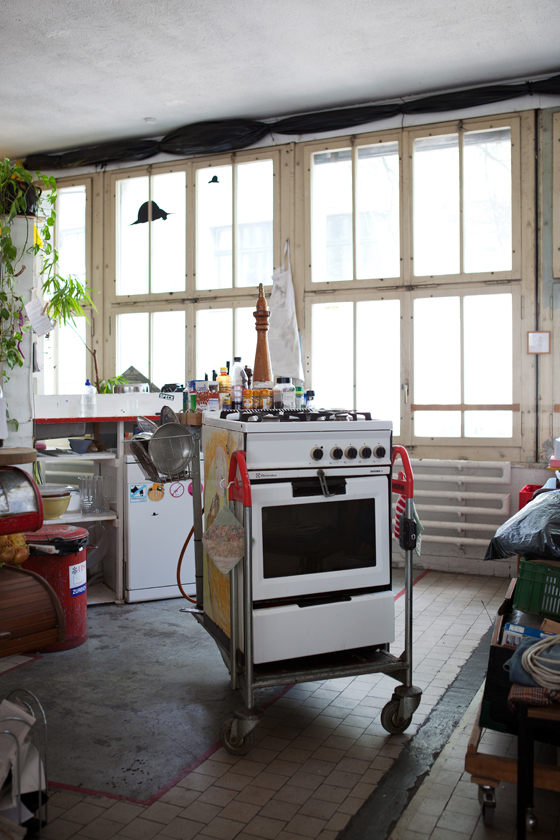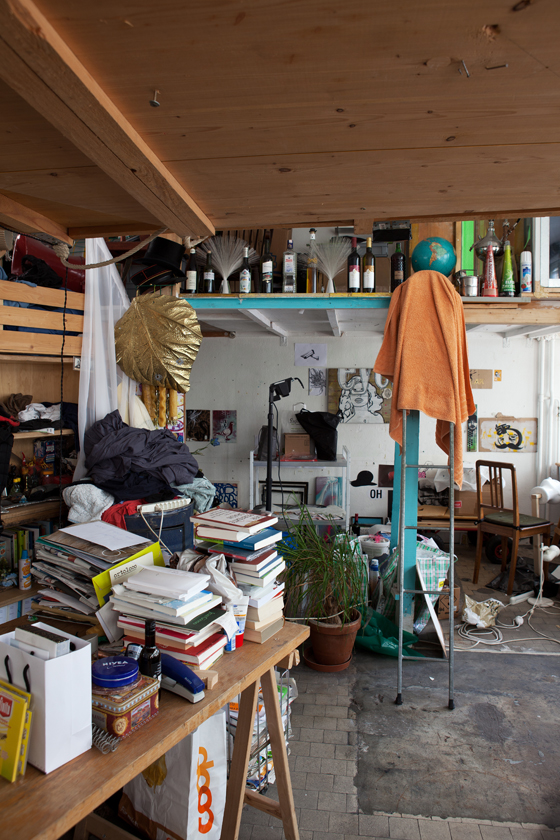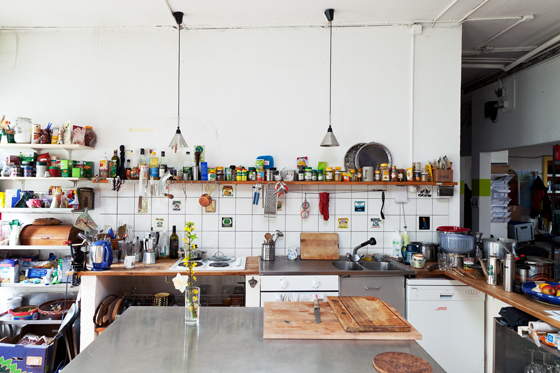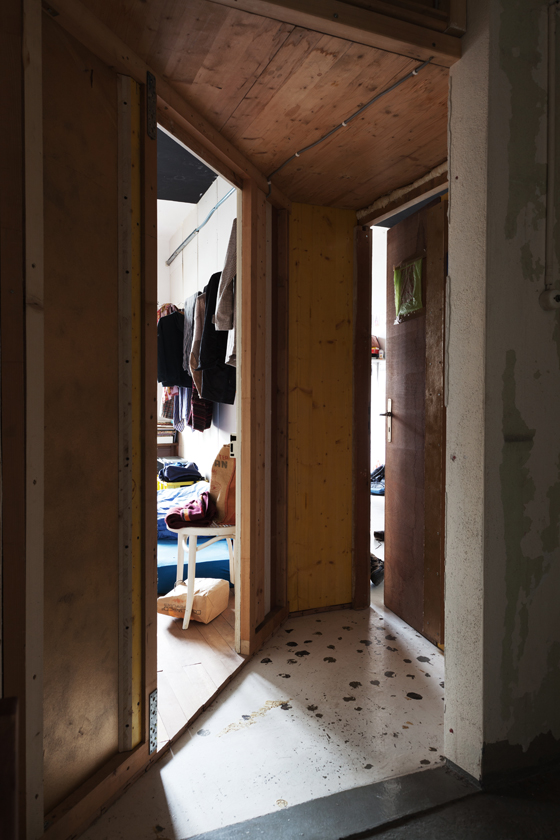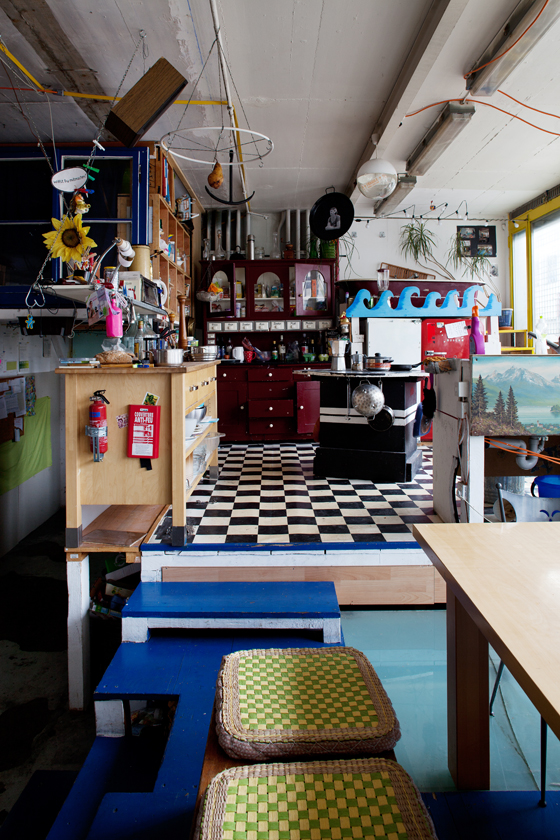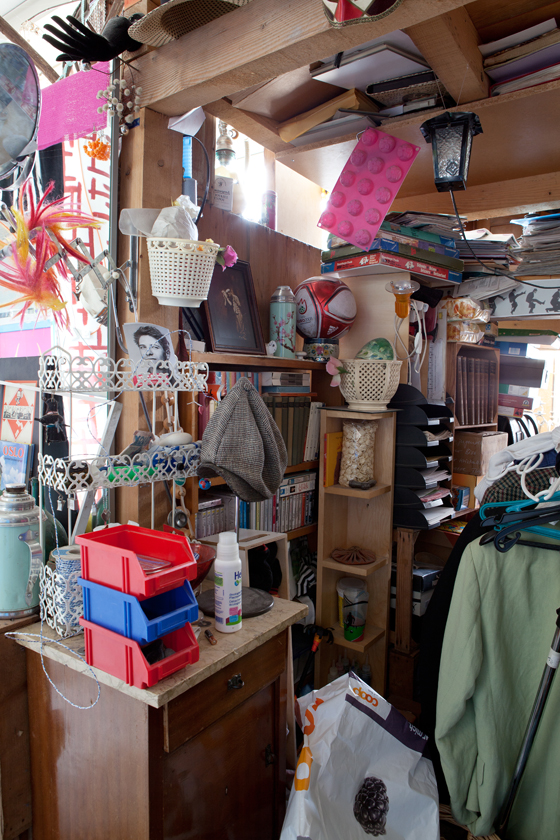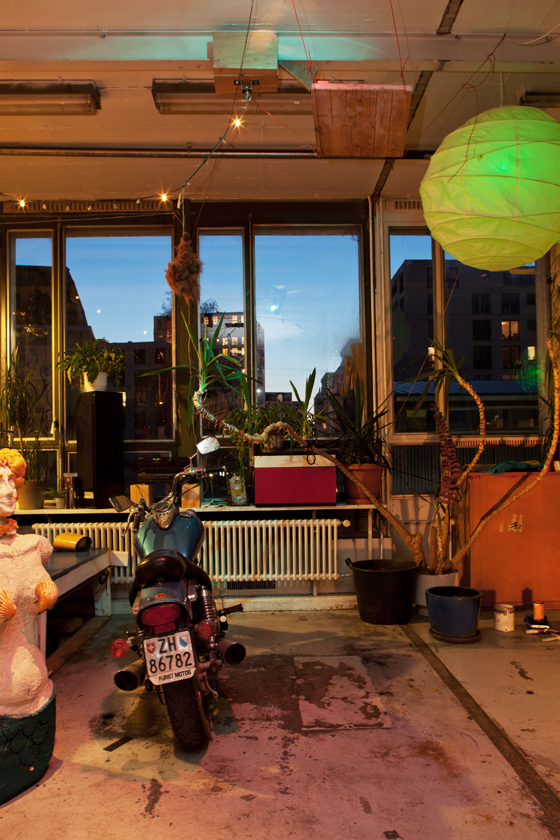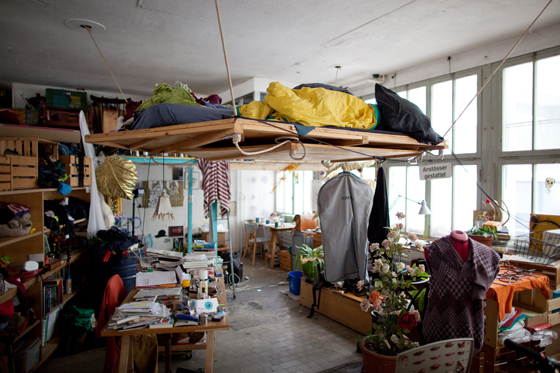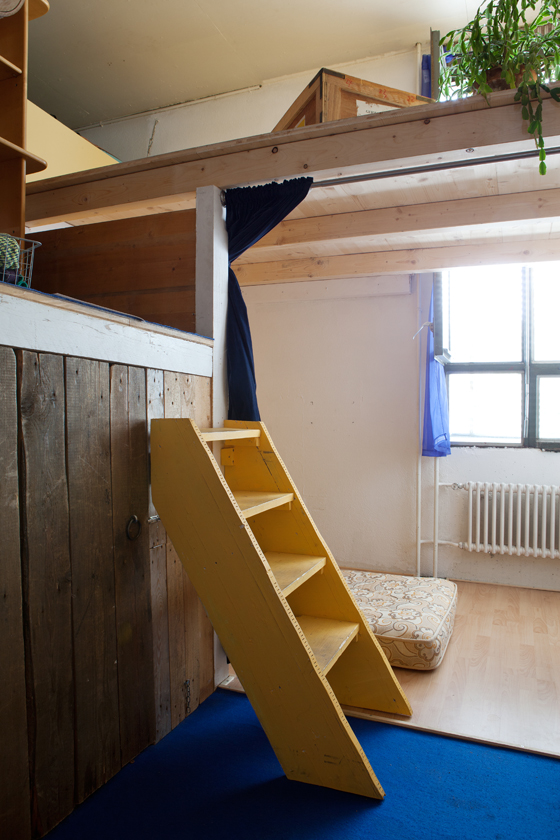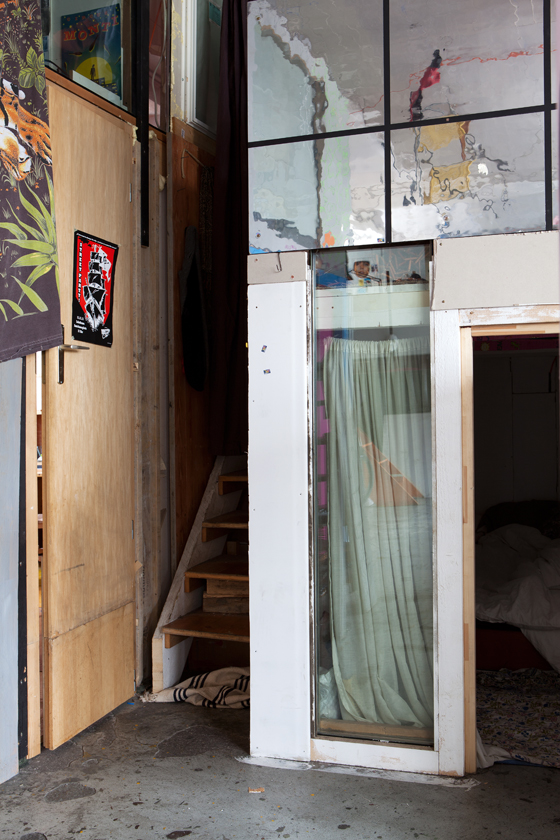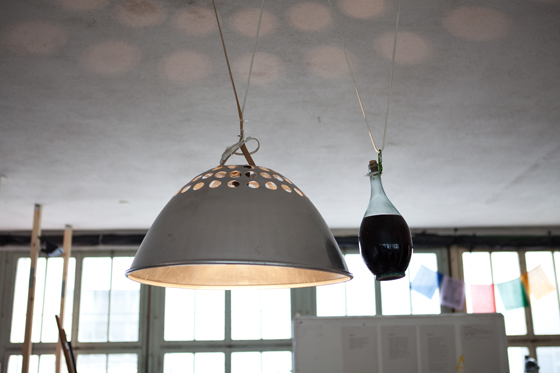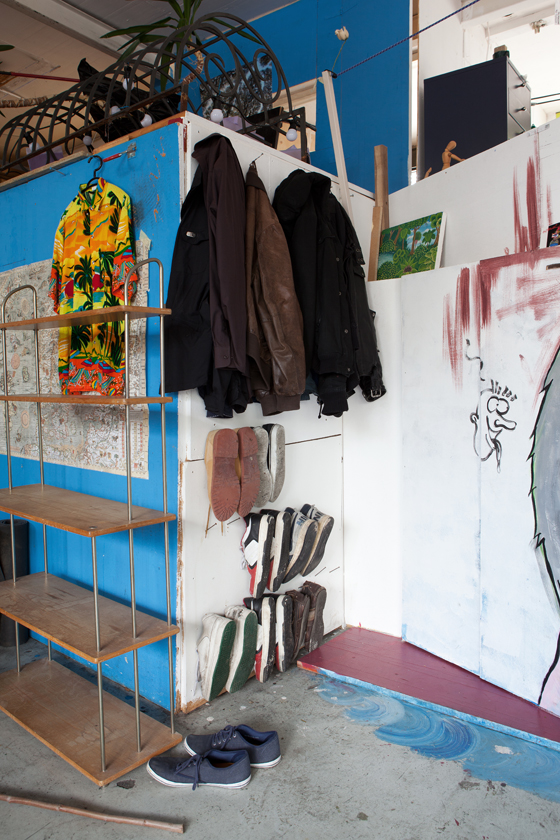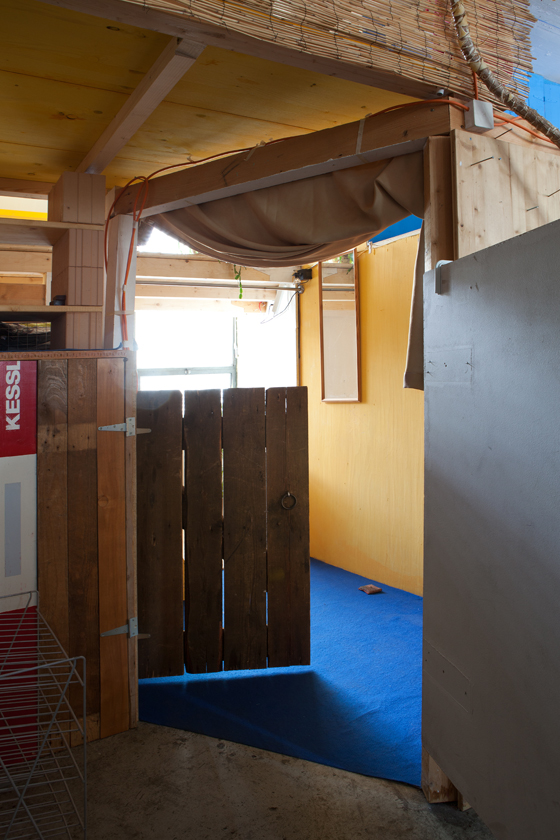Living in an Open Floor Plan
Text by Susanne Fritz
Switzerland
19.06.12
At a former industrial site in the West of Zurich, young people show the potential of an open floor plan, how to build sustainably using recycled materials, how to be resource conscious, and demonstrate that food from Aldi – a discounter – can well be in line with an ecological and anti-consumption attitude.
Sleeping on the bridge instead of under the bridge: alternative usage of a former connection of two buildings; Photo © Pierre Kellenberger / Architonic

Sleeping on the bridge instead of under the bridge: alternative usage of a former connection of two buildings; Photo © Pierre Kellenberger / Architonic
×Hybrid use, flexible floor plans, alternative usage, sustainability – these are some of the topics architects consider when planning a building. How will the site develop, which renters will move in – ideal scenarios for this do exist, however, this can be planned only to a limited extent using factors such as building style, flat size, amount of rent, and infrastructure.
Flat-sharing communities like the one on the premises of a former paint factory in Zurich can serve as case studies for architects and interior designers or trend researchers.
In the beginning there was the idea of a living and working community which was implemented by converting the disused site. Here nobody was bothered by the group of young creative people that founded a living and working community.
In the living and working studio 'Fabritzke' they could share not only the infrastructure, such as kitchen, bathroom, and service elevator, but also their knowledge and could pass on assignments.
Home office and co-working can be regarded as derivatives of this alternative working and living culture; by now these models are well established in our work environment.
The approaches are not that different: Alternative creative studios that combine work, leisure time and culture are quite similar to concepts like the SOHO house. Cocktail bar, rooftop pool and bowling lane all show the same need for exchange and sociability between work phases. And they offer advantages such as social networking, shared infrastructure and flexible working.
At Fabritzke joint meals, festivities, and cultural events such as movie nights and concerts serve to practice the alternative culture, maintain friendships and continuously expand the network.
After moving the living area to the floor above, people living somewhere else were also invited to use the studio, to contribute new ideas and to get new impressions.
The Fabritzke studio and the resulting flat-sharing community 'Kater Carlo' – named after the community's pet – soon found many friends and like-minded people who also wanted to live and work this way. This led to further satellites each of which has its own character and individual living style.
A bridge that used to connect two building parts now is a room of the flat-sharing community located above Fabritzke; its occupants take turns – the 'floating' room is the most spectacular one and offers maximum privacy, however, it is also very badly insulated.
The Elysorium shows how a community of eleven individuals can manage with a minimum of space. A large table and an open elevated kitchen form the core of the large room. Individual recesses are separated more or less, depending on the need for privacy. The room is also used 'vertically' – private sleeping and living islands are suspended from the ceiling as a second level. Thanks to the innovative use and re-use of materials or components for the individual bunks and islands the energy balance of the interior design probably is exemplary.
The joint bath features one shower. As they are not a soccer team, the eleven occupants do not need to take a shower all at the same time after training sessions and can easily share the shower. This does not require a plan. Teachers, workers and freelancers all have different daily routines and can adjust to each other's routine.
The flatmates share the philosophy of using resources carefully. This includes not only the joint use of space but also the responsible handling of food and energy. The community manages with one four-plate stove top, one refrigerator, and one washing machine. Lunch and dinner are based on experience. Depending on the weather and the day of the week, there are more or fewer people at the table; a fixed time, registration or obligation is not part of the concept.
However, cooking is a joint activity; someone always takes the initiative. Fruits and vegetables come from Ortoloco - a vegetable cooperative – and from Aldi. The priorities of Ortoloco – high-quality food, fair working conditions and ecological production methods – are quite different from those of the discounter that passes on its volume-based price advantages to customers. However, the Aldi surplus is often simply thrown away – and then collected by the occupants of the Elysorium and thus still used.
The flatmates also demonstrate the hybrid use of rooms: for a time, the common room was converted into a sleeping room, in order to verify the benefits and also the drawbacks of a dormitory – after which it was converted back to a living room.
It is uncertain, how much longer the flat-sharing community in Zurich's Wild West will exist. What is clear is that a change cannot be prevented, even though the flatmates would wish so. However, there could be another option – between demolition and anarchy: hipsterization, i.e. the moving in of creative professionals such as graphic designers, photographers, architects. The flat-sharing communities could stay and the premises would be upgraded, similar to District 5. Hopefully with a more carefully planned architecture than the new buildings of the large-scale investors surrounding the Labitzke site. This would be the model of a slower capitalization – bringing benefits for everybody – but above all for the developer. Experience shows that when creative professionals move into an area, development is almost automatic and includes an accelerated return on investment.
A municipal design plan also would be beneficial for the future of the site. However, most probably the old factory will be demolished in 2013. 300 new rental flats in the medium price segment are to be constructed – which does not seem far-fetched in a city whose rate of empty apartments is close to zero.
Social housing apartments or cooperative living space are not part of the plan.
Some of the present occupants are now thinking ahead, beyond the city limits – and they will certainly once again be pioneers for innovative living and working concepts as only freethinkers can devise them.

